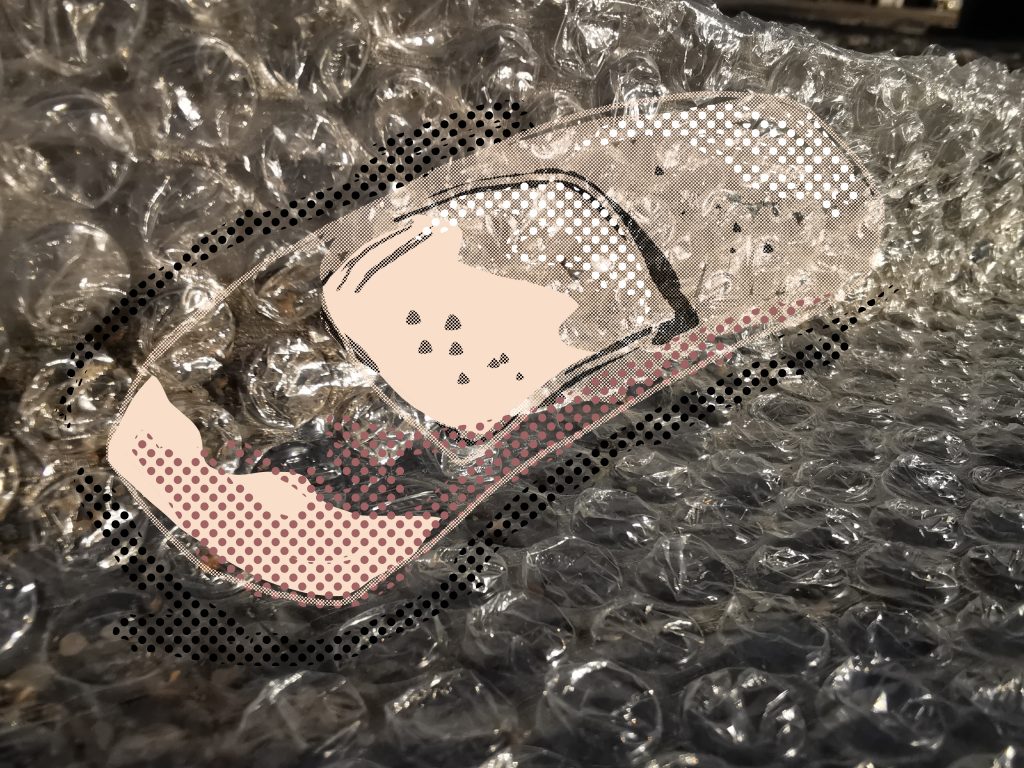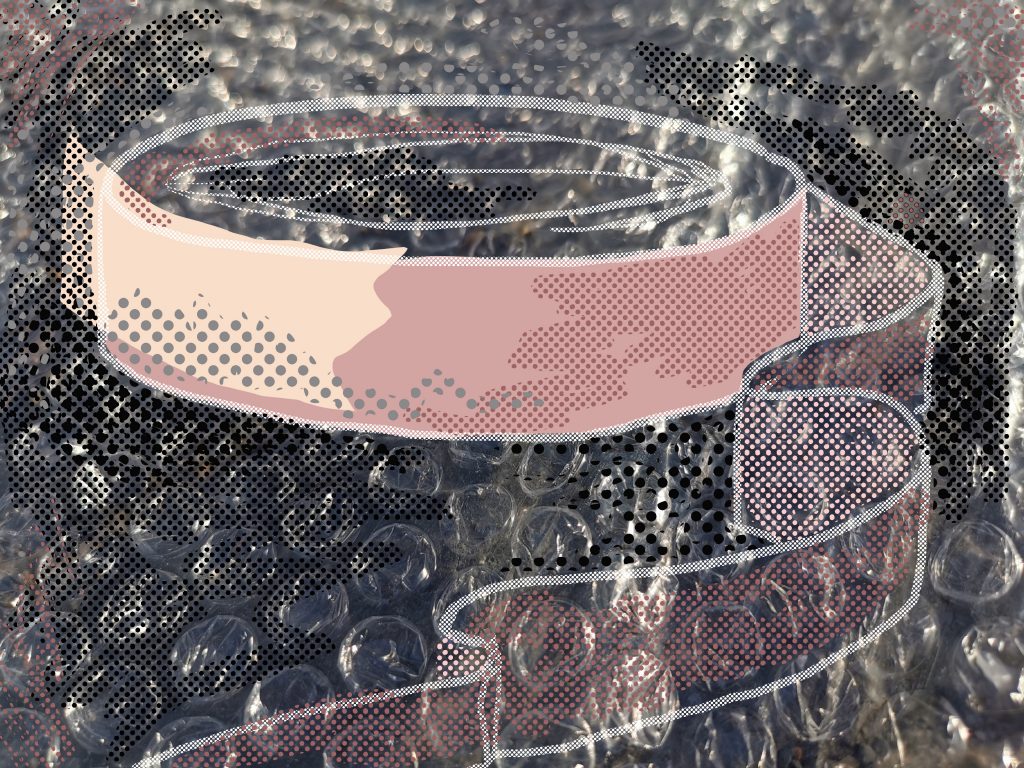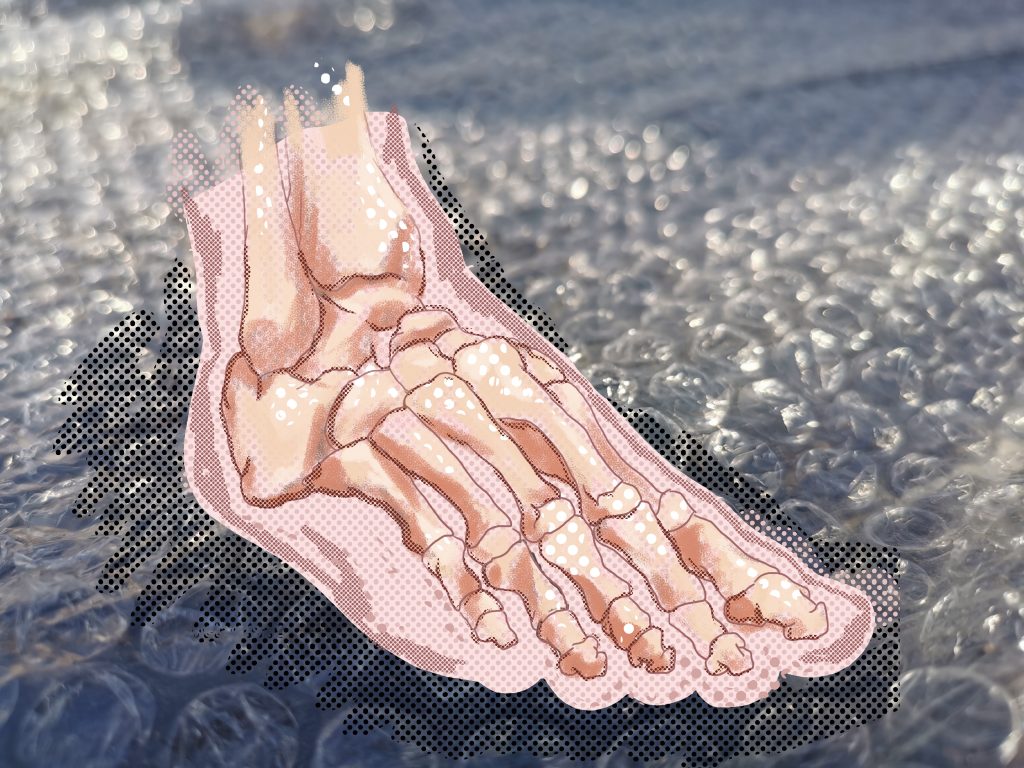All the blister questions answered: what are they, how to get rid of them, wtf are all those different plasters for, and most of all – to pop or not?
Many a good walk was spoiled by a blister. And since we have many, many good walks on offer it seems only fair that we engage in diminishing those blisters! Read on, and on and on, for far more blister info than you ever wanted to know…
In brief, what is a blister?
Blisters are protective bubbles that form between layers of skin. When shoe, skin and bone are all moving at different rates, the layers of skin stretch different amounts. The layers of skin can then tear away from each other. This creates space that fills with fluid to cushion the sore spot and give it a chance to heal.
Because the layers of skin aren’t anchored to each other any more, the blister can balloon out. New skin grows underneath, and when it’s strong enough the fluid is reabsorbed into the body and the top layer of blister skin dries and falls off.
What is a blood blister, then?
Also a protective bubble. Blood blisters just mean that the original damage caused some bleeding so the fluid is blood rather than plasma. Often caused by a pinch right through all lower layers of skin, they’re a bit more sore than normal blisters, and they look badass.
What shall I do about my blister?
You could give it a chance to heal. This means not continuing to do the thing that made the blister in the first place. If that thing was walking or running, you might want to:
- Stop walking or running for a bit! (Blisters heal in three to seven days)
- Keep it uncovered or loosely covered so it can breathe and heal
- Make use of the pledge button or the routing functionality to keep track of your Slow Ways walking dreams from your blister convalescence!

What if I don’t want to stop walking? How to stop my blister getting worse?
If you have to or want to keep going, you could try to keep the blister intact by lessening the rub:
- Change shoes
- Wear thick socks or even better two pairs of socks (the socks rub against each other and save the friction on your foot)
- Dust your feet with a little bit of talcum powder so they’re not so sweaty (but don’t go overboard. Talc absorbs moisture, so a sock full of damp talcum powder can increase friction)
- OR vaseline works too. Anything to lessen the rub. The very day I wrote this article I accidentally did two and a half Slow Ways (this one and this one and half of this one) in flipflops, and lip balm saved the day
- Put a doughnut-shaped piece of moleskin around the blister to lessen the pressure on the blister itself
- Put a blister plaster over the place. There’s too much information on types of plasters below
How to keep going despite a blister
Try not to limp! Walking funny to avoid putting pressure on a sore blister can quickly cause all sorts of other aches and pains as you use your body lopsidedly. If you have to keep walking, try to walk as evenly as possible despite the pain.
You might want to pop the blister if it is making it hard to walk. Read on!
Should I pop my blister?
It’s obviously best not to pop a blister, as an intact blister is sterile and clean inside, exactly as it means to be! But if you are on a multi-day hike with one pair of shoes, and the blister is making walking hard, you might need to pop it in order to keep going.
In that case, piercing it cleanly to let the fluid out and putting a plaster on is better than letting it burst raggedly in your germy shoe.
Do it as cleanly as you can in your circumstances. Sterilise a needle or blade with the hot blue part of a flame, iodine, alcohol or boiling water. Popped blisters like to heal themselves and fill back up, so make several big needle holes, or cut a slit.
Don’t peel the saggy empty blister skin off – leave it in place to protect the tender skin beneath.
What about threading blisters?
If your blister fills back up every day, one option is to sew a short length of thread in one side and out the other. The fluid can then continue to drain along the thread. It can be sore to start with, as the thread and blister ‘roof’ are in contact with the tender inside layer of new skin. It can also be an infection risk – it’s hard to sterilise a whole needle, near impossible to sterilise thread, and leaving the thread in place can introduce infection later.
Some people advise against it; many people do it regularly without any negative effects. I wouldn’t have made it from The Hague to Brussels in new shoes otherwise.
There are lots of different blister plasters – which do I need if any?
Hydrocolloidal plasters
Compeed is the most famous brand name, and many other brands have a similar product. Hydrocolloidal means a substance that forms a gel in the presence of water, and these plasters are not for preventing blisters but for treating them. If the top skin of your blister has come off and the raw skin beneath is showing, that is the time for these plasters. It creates a new top layer of skin, and allows the healing to carry on underneath.
These plasters are quite thick in order to cushion the sore place, which means that putting them on a full blister just doubles the pressure. Also, because they fuse to the blister, they’ll generally take the protective top of a full blister with them when you peel them off, which you don’t want.
Hydrocolloidal plasters don’t stay on very well by themselves, so it’s worth using tape or ordinary plasters to hold it in place. Tape around the edges but leave the middle tape-free because the clever hydrocolloidalness lets gas escape from the blister as it heals underneath. You also need to keep an eye on the blister underneath the plaster. If it’s not weeping too much and looks like it’s healing, you can leave the hydrocolloidal faux-blister in place for up to a week.
Take your socks on and off carefully to avoid tearing the plaster off.
Liquid skin
Many brands offer liquid ‘skin’ that can be brushed or sprayed over to protect and prevent blisters. It’s good for crannies that are hard to put plasters on, but can sting on broken skin.
Moleskin tape
Not too thick, not too expensive, water-resistant, long-lasting: moleskin is a good idea in a walker’s first-aid kit. You can cut it to shape, or snip out your own bespoke doughnut shapes to relieve the pressure if you don’t want to put it directly on the blister,
Zinc oxide tape
Zinc oxide tape is hardwearing, antiseptic, and promotes healing. The zinc draws cells towards it and enhances blood flow. It sticks on really firmly, and is best for preventing blisters.
Use it on hotspots or places that often blister, around the back of your heel, your toes and instep. But apply carefully so as not to get wrinkles that might lead to worse rubbing. You can also use it to keep a hydrocolloidal plaster in place. It’ll stay in place for a few days, and likely need soaking to get it off.
You can put it right onto a blister too if need be – it lets air get to the wound, dries it out, and is antimicrobial, but there’s no chance of peeling it off without taking the blister with it, so it’s a bit all or nothing. (Incidentally, zinc oxide is the active ingredient in nappy rash cream. See below for more on nappying up your foot).
Other tapes
There’s also medical tape, micropore tape, athletic tape, kinesiology tape, but even this TMI blister roundup is running out of puff! In brief, if the tape is very firm and sticky don’t put it on an existing blister unless you have no alternative, in which case don’t expect to take it off again for a long time. Whether taped or not keep an eye on the place for cleanliness and healing – if it’s not getting better it might be getting infected. See below.
… and how to get tape off?
Different tapes have different adhesives. Some will loosen on soaking in warm water, others with an alcohol wipe, some with baby oil, and you can buy a lanolin-based spray made exclusively for removing athletic tape.

Or for something completely different: PTFE patches
ENGO is the best-known brand name. These differ from all the plasters above because you put them on your shoe rather than on your foot. They’re made of PTFE, which plumbers will know all about, and is also the basis of non-stick saucepan coating Teflon – a super-slippery substance. The patches are super thin so they don’t change the fit of your shoe, and the slipperiness lasts for hundreds of miles. You put them just in the places that usually cause blisters, so that your socks slither smoothly over those bits as you walk. If you blister easily or always in the same places, these can be a game-changer.
What to do with an infected blister?
Is the fluid in your blister cloudy and green or yellow? Maybe the skin around the blister is red, hot and tender? It could be smelly or weeping (yuck!). If any of these things, your blister might be infected. Blisters can get infected by bacteria, viruses or fungus.
If you have an infected blister:
- Wash your hands before touching it
- Give your stinky blister a good clean, massaging it well but gently with soap and running a warm tap over it for several minutes. Do this twice a day if you can
- Make a saline solution of one teaspoon of salt per cup of warm water, and give your empty blister a good soak
- Put some antiseptic ointment on the blister if you have any
- If you need to put a plaster over it to protect it and keep walking, change the plaster regularly – refer above for what plasters to use when
- Keep an eye on the blister. The vast majority get better quickly on their own. Go to the doctor if it doesn’t heal though, and go to the hospital quickly if you notice red streaks heading up your leg – this could be a sign of a skin infection becoming a blood or lymph infection which could be serious
How to avoid getting a blister in the first place
- Ease new shoes in by wearing them for short walks first
- Buy new shoes later in the day. Feet expand throughout the day with heat and pressure, so buy shoes that fit your feet at their largest!
- Consider cushioned insoles. Badly fitting insoles will cause blisters though
- Keep your feet as dry as possible – choose sports socks made from a material that wicks the sweat away from your feet. Bamboo, merino wool and silk are good natural fibres, but synthetic fibres such as nylon, lycra spandex and polyester are good too. Buy socks in a blend of fibres to balance wicking and longevity. Ingeo is a corn-based eco-friendly polyester alternative. Cotton is the worst! It loves moisture (hydrophilic) and absorbs sweat into its fibres. Cotton makes good bath towels for the same reason it makes bad socks. Rather than absorbing, wicking fabrics pass moisture along the fibre to a place that it can evaporate into the air
- If you suspect you’ll get a blister you can preemptively tape up the area, stick a plaster on the place, or put on some talc or vaseline – anything that lessens the friction directly on the surface of the skin
- Keep vigilant for hot, sore areas appearing as you walk and take one of these pre-emptive measures as soon as you notice a blister even thinking about it.
- Toughen up your feet over time. Keep your callouses – they are protecting the bits that habitually rub. But moisturise rough skin that is at risk of cracking, and moisturise the bits between soft and hard skin as rubs can occur there
And some more out-there tips – we couldn’t possibly comment (but you can, in the comments below!)
- Soak your feet in tea! Or 10% tannic acid (from the tannic acid shop?!)
- No talc where you are? Cornstarch will also do the trick
- Some people slather on the nappy rash cream to lessen friction
- Spray your feet with antiperspirant if they get very sweaty
- No blister plasters, ordinary plasters, moleskin, tape or bandage to hand? Some people are enthusiastic about duct tape! Of course they are
- Give up the fags! People who use tobacco products are apparently more susceptible to blisters
- Some people swear by toe socks – could be worth a try. If it doesn’t work and you just have to keep them as house socks, they sure look cute
Tell me more! Why are some blisters huge bubbles, and some deep but sore?
Here’s the science! Friction blisters are a result of shear stress between layers of skin. Shear stress, since you ask, is the force that causes deformation of a material by slippage along a plane parallel to the imposed stress! Ie, two planes (two layers of skin), shearing apart from each other as the result of stress (rubbing).
This shear usually happens at the fourth layer of the skin (known as the spinous or prickle layer). Where it tears from the layer below, plasma leaks into the ruptured space, where it assists the cells in dividing and becoming new layers of skin and connective tissues.
The deeper the layers of skin that shear apart from each other, the closer the blister is to the nerve endings, and therefore the more painful.
This fascinating blister expert says that the shear is rarely a result of rubbing between foot and sock/shoe at all, but is the result of the bones of the foot moving – rubbing from inside!

Are some people more susceptible to blisters than others?
Blisters are not caused by movement between the shoe and the skin as most people think, but between the outer skin layers and the inner skin layers. As the bones inside the foot move, the skin doesn’t immediately follow, and that’s when shear happens between the layers. There’s loads about this here.
This means that it’s not (just) your shoes to blame, but that everything to do with how you move plays a part. Everyone moves differently, and so everyone will be differently susceptible to blistering.
Some studies show that women are more susceptible, as are younger people, less fit people, people with a lower body mass index, less hiking experience, and less fitness. There’s also some research suggesting that light coloured skin blisters worse than dark coloured skin. But another in-depth article from podiatrist Rebecca Rushton shows that there is conflicting science over gender, weight, ethnicity, age, fitness, and experience, so the jury is really out.
What do you think? What works for you? Got any good/bad/ugly blister stories? Tell us on social media. Our hashtag is #SlowWays and we’re @SlowWaysUK on Twitter, Facebook and Instagram. Also, of course, show your blisters to a doctor if they are particularly debilitating, not healing, grimly recurrent, or otherwise spoiling your day.